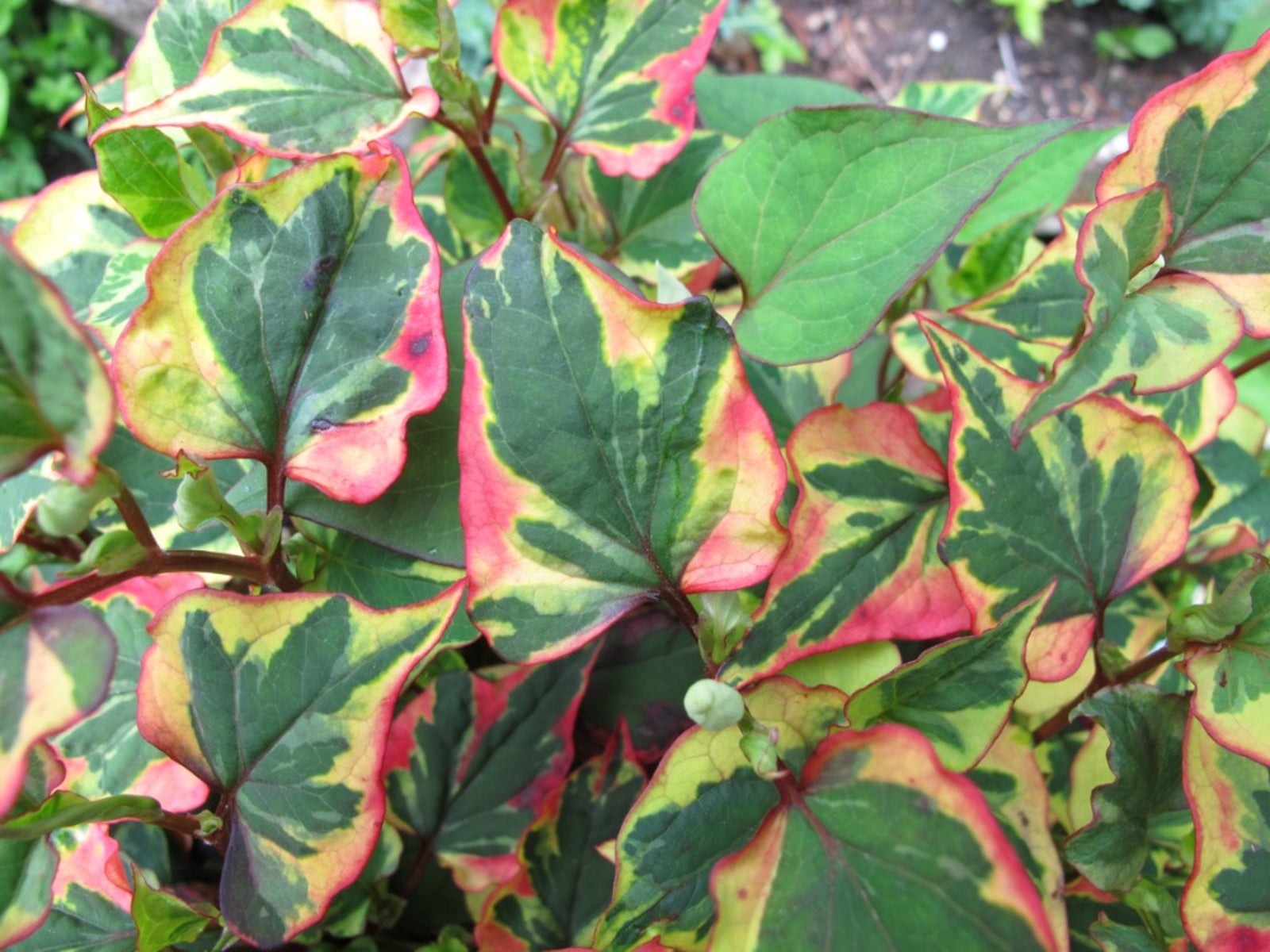Houittuynia Plant Growing: How To Grow Chameleon Groundcover In The Garden


Chameleon plants (Houittuynia) are a colorful groundcover in areas that might otherwise remain bare because of poor or wet soil. Chameleon groundcover is adaptable to many areas and can be useful in the landscape. However, chameleon plant care includes containing the plant and keeping its invasive tendencies within bounds. Chameleon groundcover, of the Lizard's-Tail family, is attractive. Colors of red, bronze, cream, and yellow border green leaves when growing chameleon plants. Chameleon groundcover is an herbaceous perennial, dying back in winter. In June and July, inconspicuous flowers bloom, but are most often not noticeable.
Containing Growing Chameleon Plants
If you're interested in having the chameleon plant growing in your yard, pond, or bog, look at ways to minimize chameleon plant care by planting in containers and contained areas. Learning how to grow chameleon groundcover is not hard, once you've learned how to keep it under control. Growing chameleon plants need little encouragement. They can quickly cover an area. Just as easily, chameleon groundcover can get out of hand. Plant rhizomes into a large container and sink it into a hole in the ground in the area where coverage is desired. Get the chameleon plant growing near a buried fence or sidewalk that may limit growth and spread. Sprigs growing out of the designated area should be removed at the rhizome.
How to Grow Chameleon Groundcover
Plant chameleon groundcover in a full sun or a partially shaded area. The best color develops in a sunny spot, but the plant remains vigorous in a shaded area. Have the chameleon plant growing in large areas where it can be mowed, if desired. You don't want this plant growing near landscaped areas that it might invade. Avoid growing it near the porch or deck, as growing chameleon plants emit a fragrance similar to diesel fuel. Chameleon groundcover is useful around ponds and boggy areas where color is needed in wet soil. Pot chameleon plants as you would any other water plant and get them going for sensational interest in the water garden or bog. Now that you've learned how to grow chameleon groundcover and its pros and cons, plant it responsibly, so that it doesn't invade forests and destroy native plants. Take advantage of this useful groundcover while keeping it under control.
Sign up for the Gardening Know How newsletter today and receive a free copy of our e-book "How to Grow Delicious Tomatoes".

Becca Badgett was a regular contributor to Gardening Know How for ten years. Co-author of the book How to Grow an EMERGENCY Garden, Becca specializes in succulent and cactus gardening.